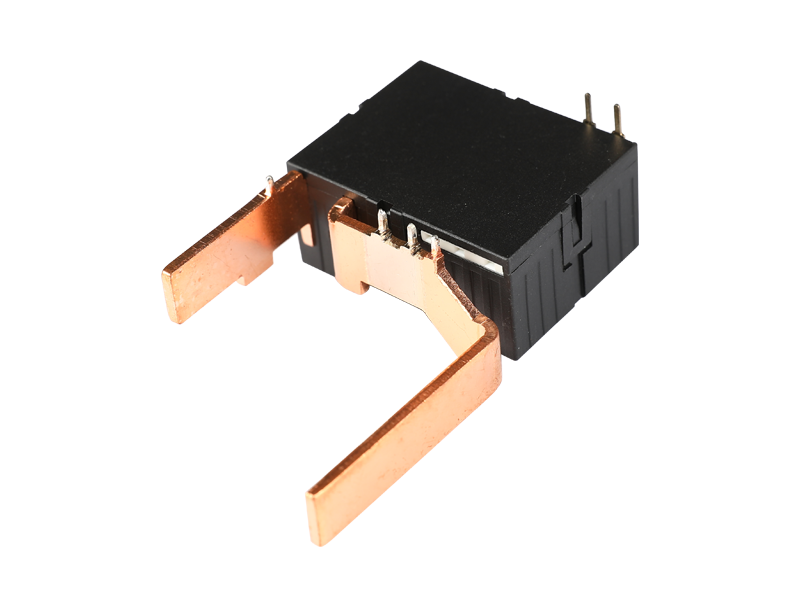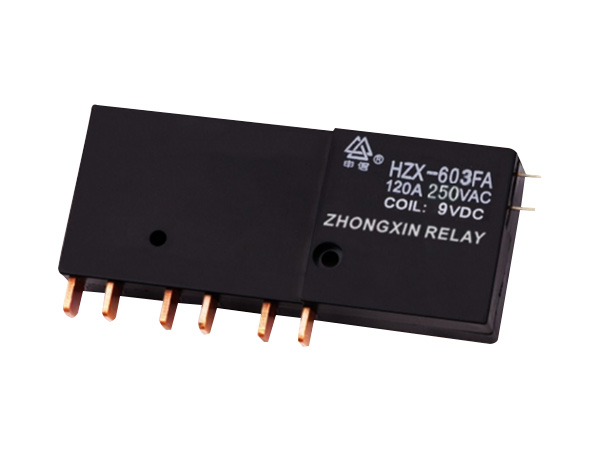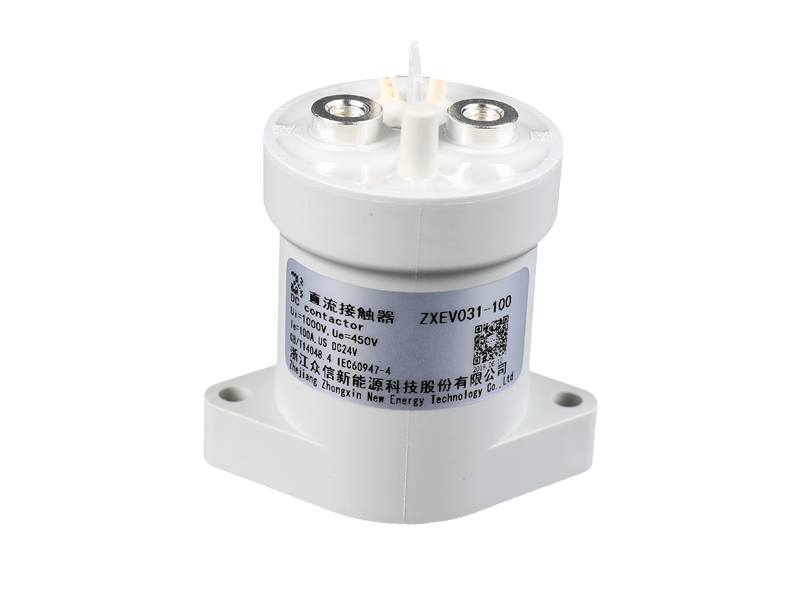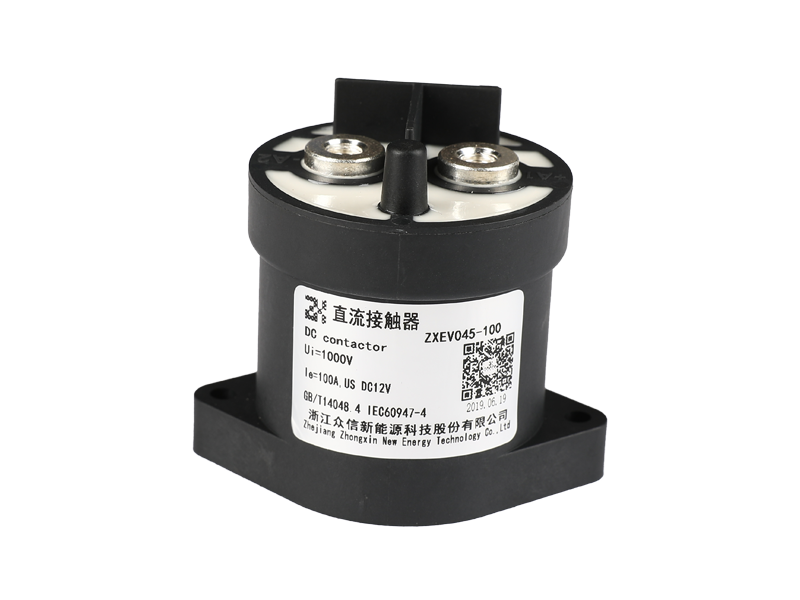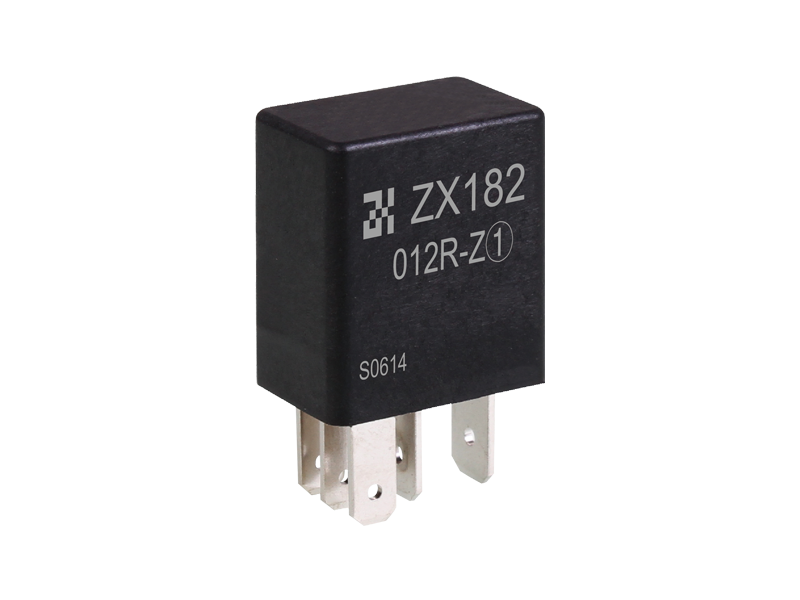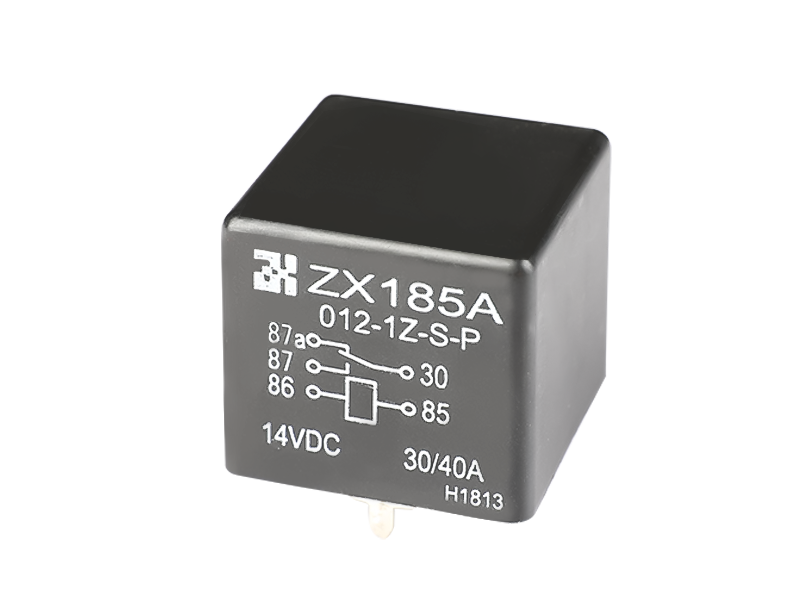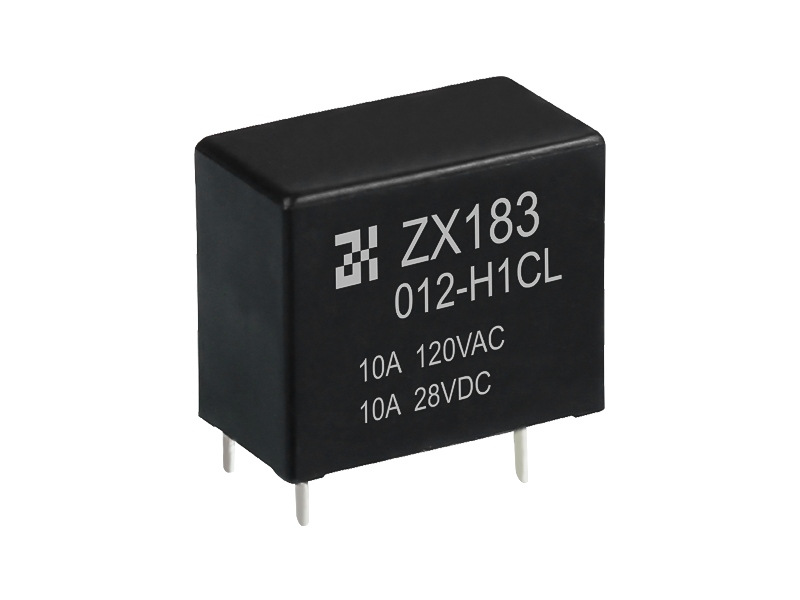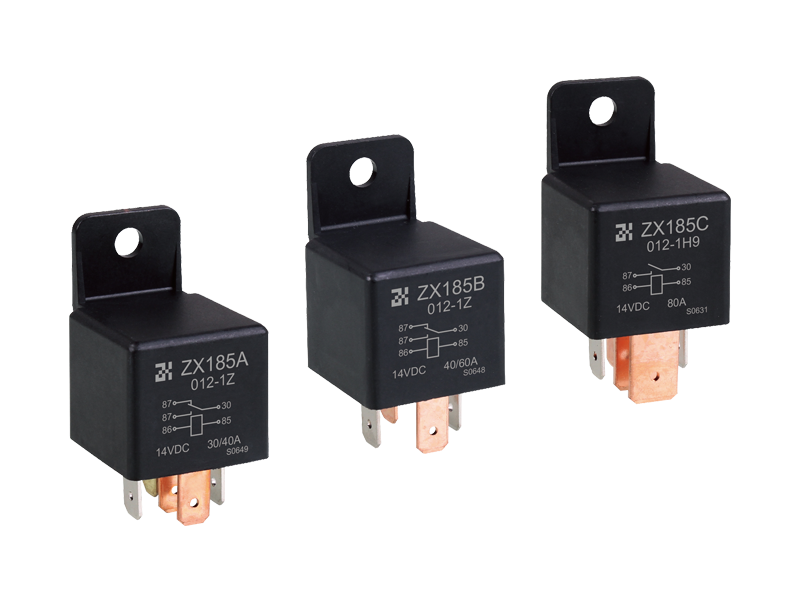High-voltage DC relays were originally mainly used in the power industry and aviation and aerospace industries. In recent years, electric vehicles have gradually risen, and driving power distribution systems has become a very important application scenario for high-voltage DC relays. High voltage is relative to 24V, 48V low voltage systems. Some low-speed electric vehicles choose the power configuration of 60V and 72V systems. Generally, the voltage of high-speed passenger cars is above 200V, and the bus can reach more than 600V. Relays that meet the requirements of this voltage phase are called high-voltage DC relays.
High voltage DC relay, the life includes two parameters of mechanical life and electrical life. The factors that affect the mechanical life include the material of the contact points, the design and manufacturing level of the opening and closing mechanism, etc. The bottleneck of electrical life is mainly the contact life.
1.Effect of magnetic field arcing on electrical life of contacts
As shown in the figure below, the principle of the magnetic blow design in the relay is explained. The left static contact, according to the current direction shown in the figure, uses the right-hand rule to determine the direction of the coil magnetic field. An arc is a current in an ionization channel formed by a voltage that breaks through the medium between the static contacts. It completely obeys the law of electromagnetic interaction. The magnetic field generated by the arc is shown in the figure. Use the left-hand rule to determine the force direction of the arc. The force direction is indicated by F in the figure.
Magnetic blowing is to use a permanent magnet or an electromagnet to generate a magnetic field. The direction in which the magnetic field interacts with the arc is to pull the circuit away from the dynamic and static contacts.
With the rapid movement of the moving contact and the application of the magnetic blowing effect, the arc is stretched and the arc resistance increases rapidly, which causes the arc current to drop sharply and the thermal efficiency of the arc to decline. The degree of ionization of the medium decreases as the temperature decreases, and the electrical conductivity of the arc channel decreases. If the arc is pulled at the same time, in the process of the arc moving outward, with other means of cutting the arc and cooling the arc, the arc will be extinguished faster.
Reducing arcing time is an important means of protecting the contacts. A good magnetic blow design will definitely extend the life of the relay. Magnetic blowing has been widely used in high-power relays and contactors with less sensitive space requirements, while in small relays, similar devices have been designed for individual products.
2. Influence of ambient air pressure on electrical life of contacts
In order to shorten the arcing time, in addition to using the above-mentioned magnetic blowing method to pull the arc, the methods often used to extinguish arcs in narrow spaces include changing the contact opening and closing environment, filling the sealed arc extinguishing chamber with a gas with high ionization energy, or The arc extinguishing chamber is evacuated.
Causes of high-pressure gas arcs
Ionization energy. In the process of gaseous atoms losing electrons and becoming cations, it is necessary to overcome the attraction of the nucleus to the electrons, that is, the energy that pulls electrons out of atomic orbitals to become free electrons. This is the ionization energy of such elements. The higher the ionization energy, the less easily the atoms are ionized, the less easily they become cations, and the weaker the metallicity; on the contrary, the more easily they lose electrons and become cations, the stronger the metallicity. In the periodic table, the highest ionization energy is helium, so helium can be filled into the sealed arc extinguishing chamber, which improves the relay's ability to extinguish the arc.
There are many studies explaining the causes of arcing in high-pressure gas environments. The general point is as follows. In a high-pressure gas chamber, arcing is performed in two stages. The cathode contact emits electrons under the action of temperature or voltage and is received by the anode to form the first breakdown; the initial formation of the arc brings high temperature and ionized gas cations, and the ion path of the arc is further expanded to form more Massive arc.
Causes of vacuum arc
Under vacuum conditions, there is no longer a medium that can be ionized. It is difficult to burn an arc, but it can still burn. At the moment when the dynamic and static contacts are separated, the metal on the contacts vaporizes, forming a metal ion channel, and an arc is formed in the channel. There are several different explanations for how such an ion channel is formed.
The first is to explain the theory of high-temperature emission electrons. It is believed that there are original defects on the cathode contacts, which are called spots. It is considered that the spot position resistance is relatively large, and the local temperature is relatively high during the energization process. When the dynamic and static contacts are about to be separated, the high-temperature part emits electrons to the anode, initially forming an arc, the arc burns, the contact material vaporizes, further forms metal vapor, and then forms an arc in vacuum;
The second explanation of field emission theory is that the cathode has the ability to emit electrons when the applied voltage between the dynamic and static contacts is high enough. When the dynamic and static contacts are about to be separated, there will generally be a final contact position with each other, and this face is positively small. The field-emitting electron flow flows to the anode through this extremely small area, and the huge current density produces a dramatic thermal effect on both the cathode and the anode, causing the melting to gradually spread to the entire contact from that point, and the contact surface melts. Generate metal vapor. A better ionization environment causes the scale of the electron flow to expand, forming a vacuum arc.
Vacuum degree: In general, the higher the vacuum degree, the less likely it is to break down and the more difficult it is to form an arc. Under ideal conditions, the dielectric strength can reach the level of 10,000V per 0.1 mm. But when the vacuum reaches a certain level, further increase will not help reduce the breakdown voltage. As shown in the above curve, it shows the relationship between the vacuum and the breakdown voltage. The lower the breakdown voltage, the easier it is to form and maintain the arc, that is, the longer the arcing time. The degree of vacuum is directly measured by air pressure. The lower the air pressure, the higher the degree of vacuum.
Vacuum sealed arc extinguishing chamber, to obtain a vacuum arc extinguishing chamber, requires good materials and sealing technology to achieve. Ceramic and resin-sealed arc-extinguishing chambers, two types of sealed arc-extinguishing chamber technology are being used simultaneously, and no one has achieved obvious advantages.
The ceramic sealed arc extinguishing chamber uses the high temperature resistance characteristics of ceramics and the arc temperature is extremely high (the center can reach 5000 ° C). Generally, materials cannot withstand such temperatures, and ceramics can just meet this requirement. However, ceramics are technically difficult to seal.
The arc extinguishing chamber made of resin has better sealing technology than ceramics, but its high temperature resistance is insufficient.
3. The influence of mechanical parameters on the electrical life of contacts
The structural parameters related to the electrical life of the contacts include: contact area, breaking mechanism, contact contact pressure, etc.
The contact area, the larger contact area of the dynamic and static contacts, can provide a larger path for the current, reduce the contact resistance, and reduce the temperature rise. When the relay is closed or disconnected, the heat from the small arc will be more easily dissipated by the larger contact, thereby reducing the risk of contact melting.
Breaking mechanism is another technical point in relay design. The mechanism itself has a stable action cycle. The time required from the start to the final movement to the maximum open position directly affects the arcing time.
Contact pressure of dynamic and static contacts, there is always a contact resistance between dynamic and static contacts, the greater the contact pressure, the smaller the resistance. Large contact pressure can reduce the electrical loss and temperature rise of the relay under normal working conditions; relatively small damage or raised burrs on the contact surface will not cause significant adverse effects under large pressure, and After several points are closed, the impact between the contacts will smooth these small defects.
4.The tightness of the arc extinguishing chamber
It is impossible to achieve an absolute seal in the vacuum interrupter, and there is a possibility of air leakage in the shell welds. An allowable air leakage coefficient has been included in its design index, and chronic air leakage is inevitable. In addition, the use of relays in electric vehicles, the severe vibration environment at any time and place, also seriously tested the seal quality.
As more and more air enters the sealed cavity, and the sealing of the case becomes worse, the vacuum degree in the arc extinguishing chamber gradually decreases, and the arc extinguishing ability will gradually deteriorate, which is an important factor affecting the life of the relay.

